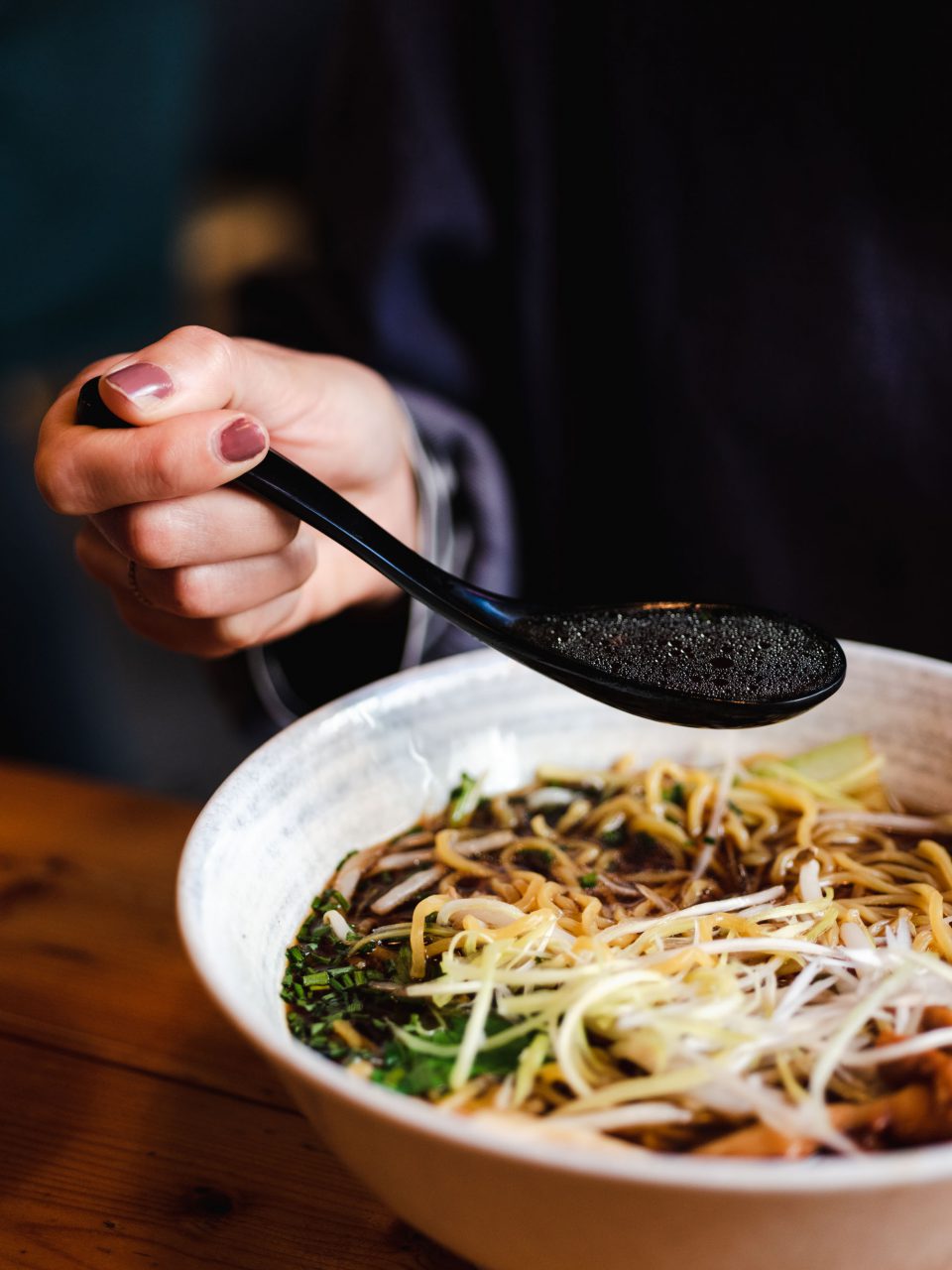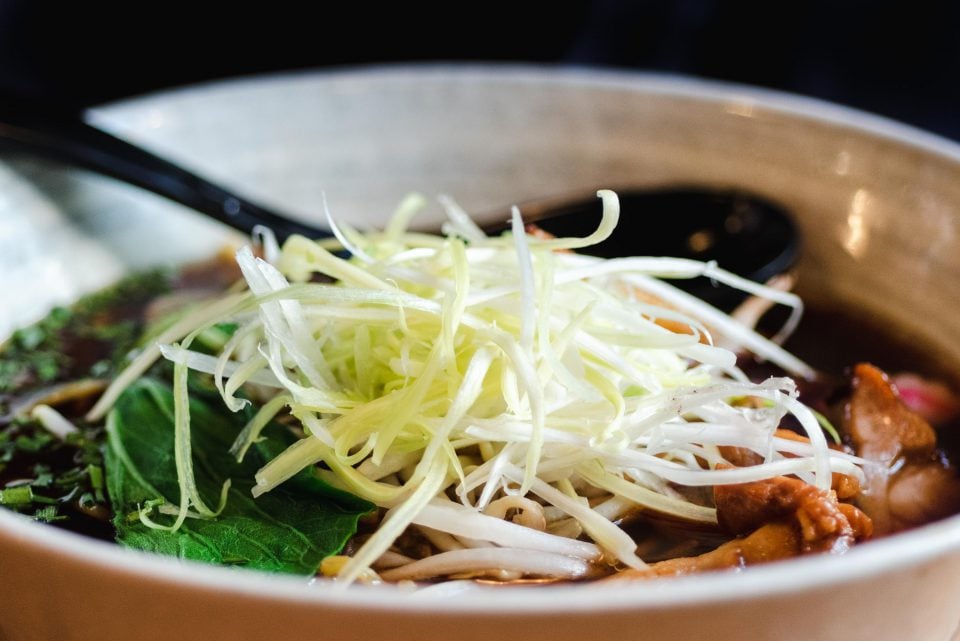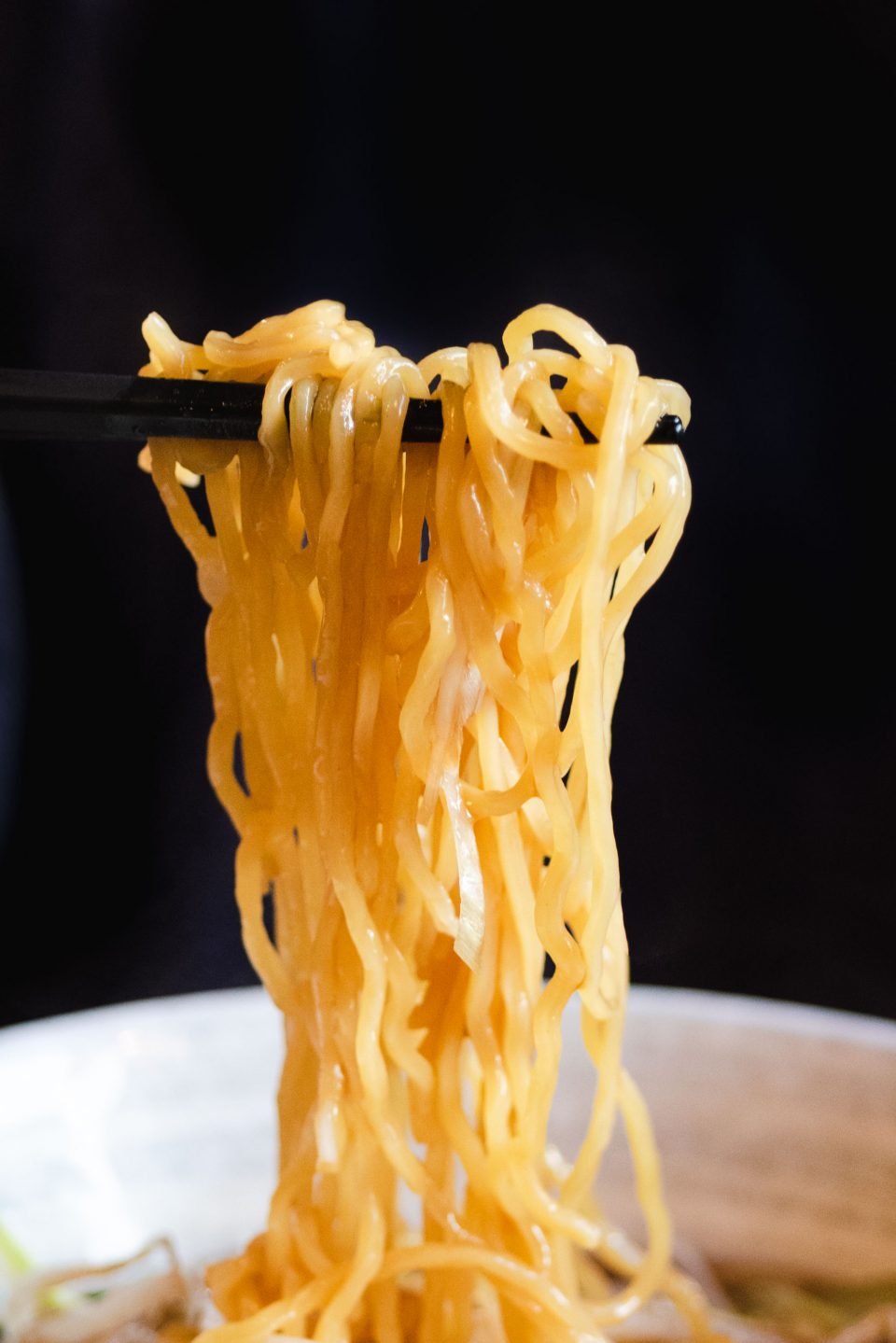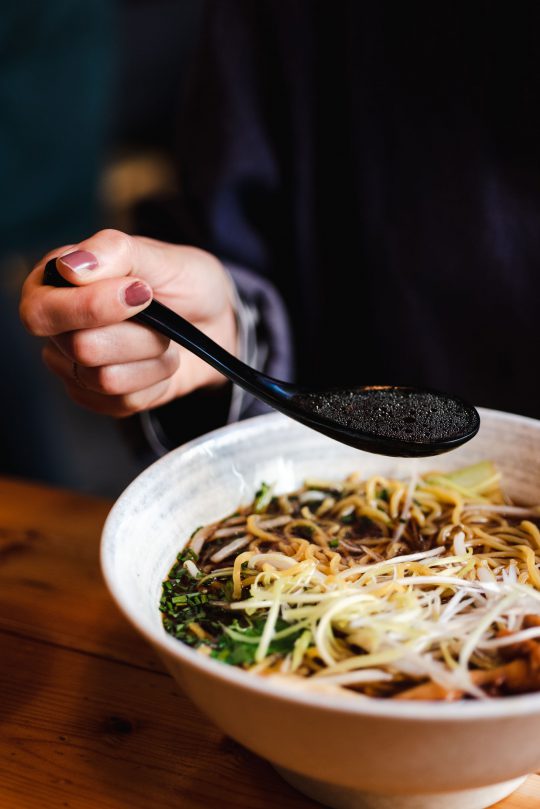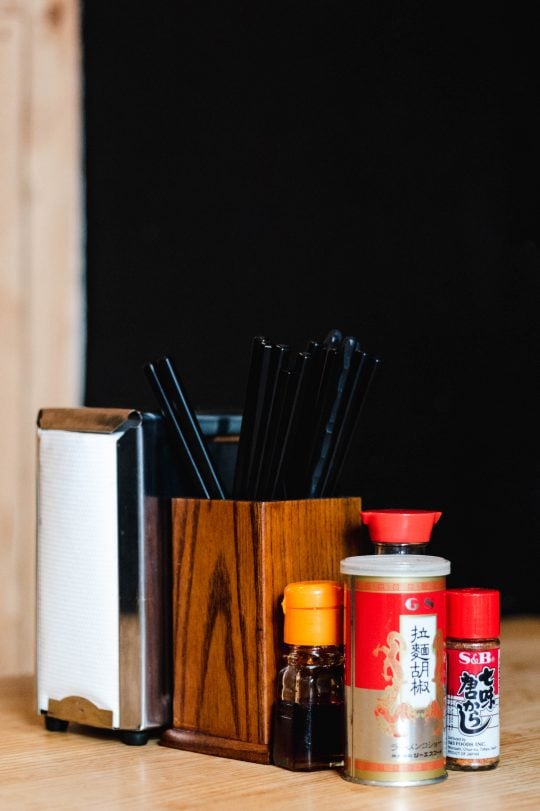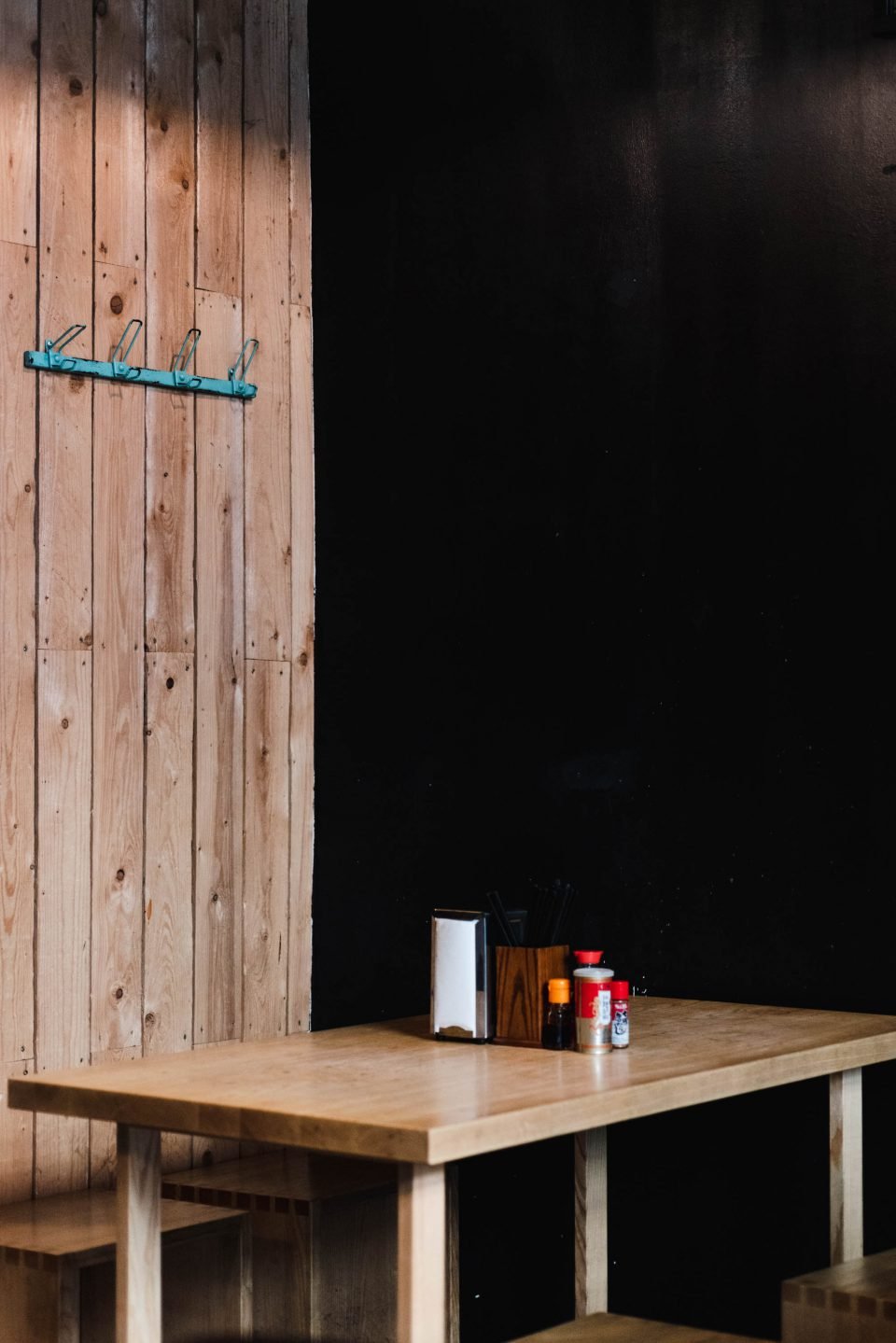A BEGINNER’S GUIDE TO THE BASICS OF RAMEN
Love noodles? Check out our guide on satisfying slurps in Berlin.
Plus 13 Satisfying Slurps in Berlin
(3 MINUTE READ)
A tangle of long, chewy noodles laced with silken savory broth and topped with a glistening spiral of chashu, shavings of scallion, and half a jammy egg as golden as the rising sun—it can only be one thing: ramen. From humble origins in the early 1900s, ramen is today a comestible phenomenon recognized worldwide, whether tucked into shiny plastic packages with ambiguous “Oriental Flavor” labels or doled out in bowls best enjoyed alone.
Over the past few years, there’s been an obvious swell in ramen restaurants all over Berlin. While places like Cocolo have been slinging bowls for years, newcomers have popped up and are making names for themselves with the classics—think shoyu and miso—along with fresher takes—like Hako’s black sesame tantanmen. But before you dive into a bowl and start slurping, strengthen your knowledge of the ramen essentials that will help you navigate menus and delight your friends and family with noodle, broth, and topping enlightenment.
The Basics
You might think of ramen as a simple soup, but it’s an extremely diverse Japanese dish that has specialty and regional variety aplenty. An understanding of the essentials will let you enjoy the complex flavors of luscious bowls with garnishes galore that much more deeply. The first step is to familiarize yourself with the three fundamental components—noodles, broth, and toppings.
The Noodles
Chinese in origin, ramen-style noodles can be thick or thin, smooth or curly, fresh or dried. What makes them so special is an ingredient called kansui—an alkaline mineral water that, when combined with wheat flour, salt, and water, gives the noodles their singular firm and bouncy texture and subtle yellow hue.
The general shape and bounciness of any given bowl’s noodle is left up to the chef. The choice can depend on something specific, from the noodle’s overall broth-clingability to rules of tradition. But, of course, some choices are much more subjective, and a chef might pair that noodle with that bowl of soup simply because they like it.
It used to be standard for ramen shops to make their noodles by hand in-house, but thanks to automated machines and quality dried noodles, that’s less common these days. If you’re curious to know what kind of noodle your bowl contains within its depths, ask!
The Broth
When a bowl hits your table, the soup you’ll be slurping generally consists of two things: the ramen stock and the seasoning. Ramen stocks vary widely but most commonly are based on a chicken, pork, or seafood stock simmered with kombu, katsuobushi, various animals bones (pork, beef, chicken, or fresh fish being most prevalent), onions, mushrooms, and other aromatics like garlic, leek, ginger, and scallion. You’ll also find vegetable-based stocks, especially popular in Berlin where vegetarians and vegans make up nearly 20% of the 3.7 million residents.
Tonkotsu is an especially celebrated ramen broth base that’s made up of pork bones and fat simmered for a really long time to create a thick, extremely hearty, almost creamy broth. The velvety liquid is incredibly rich and sure to leave your lips glossy with porky fat and collagen.
Along with the soup stocks, there are four well-known soup seasonings that affect how a bowl looks and tastes: shoyu, shio, miso, and curry.
Shoyu means soy sauce, and a shoyu ramen is often paired with clear to brown chicken or seafood broths, giving them a darker brown color and tangier, saltier, umami-forward flavor profile and light mouthfeel. Shio means salt, and a shio ramen has a salty and usually clear or light yellow broth based on chicken, vegetables, fish, and seaweed. Miso, a traditional Japanese fermented soybean paste, typically tastes salty but can also take on a range of sweet, umami, and earthy flavors depending on the process and length of fermentation. Miso ramen combines this fermented paste with a more fatty chicken or seafood broth base for a thicker, bolder, and more robust ramen. Curry ramen is the newest of the four seasonings (“invented” in Hokkaido in 1965) and is typically a pork and vegetable based broth seasoned with, you guessed it, curry.
The Toppings
Once the noodles, broth, and seasonings, are swirled together in a bowl, it’s the toppings’ time to shine.
Some of the most common toppings are: meats like chasu pork, kakuni, shredded pork, crispy duck, chicken, ground pork or beef, various types of seafood, and fish cake; eggs, whether simply boiled or boiled and seasoned, or served onsen-style; fresh vegetables like bean sprouts, scallions, corn, cabbage, and mushrooms; preserved vegetables like menma (lacto-fermented bamboo shoots), pickled mustard leaves and ginger, wood ear mushrooms, nori (dried seaweed) or wakame.
At many ramen shops you’ll also have access to a few condiments with which to complete the seasoning of a bowl to your liking: togarashi (a Japanese chili powder either straight-up [ichimi] or blended with orange zest, sesame seeds, ginger, Sichuan pepper, and hemp [shichimi or nanami]), ground or whole sesame seeds, toasted sesame oil, soy sauce, and ground white or black pepper.
Slurp for Yourself
To increase knowledge or proficiency in just about anything, the prevailing advice is always: practice, practice, practice. Taking what you’ve learned about ramen today, my advice to you is simple: eat, eat, eat!
- Cocolo
- Paul-Lincke-Ufer 39-40
- 10999 Berlin Kreuzberg
- –
- Cocolo Ramen
- Gipsstraße 3
- 10119 Berlin Mitte
- –
- Hako Ramen
- Boxhagener Str. 26
- 10245 Berlin Friedrichshain
- –
- Makoto
- Alte Schönhauser Str. 13
- 10119 Berlin Mitte
- –
- Marubi Ramen
- Schönhauser Allee 177
- 10119 Berlin Prenzlauer Berg
- –
- Men Men Ramen House
- Weserstraße 16
- 12047 Berlin Neukölln
- –
- Morimori
- Oranienstraße 201
- 10999 Berlin Kreuzberg
- –
- The Panda Noodle
- Lausitzer Pl. 12A
- 10997 Berlin Kreuzberg
- –
- Ramen x Ramen
- Gabriel-Max-Straße 2
- 10245 Berlin Friedrichshain
- –
- Takumi NINE
- Pappelallee 19
- 10437 Berlin Prenzlauer Berg
- –
- Takumi NINE Sapporo
- Chausseestraße 124
- 10115 Berlin Mitte
- –
- ULT Ramen
- Schulstraße 29
- 13347 Berlin Wedding
- –
- XXX Ramen
- Leibnizstraße 70b
- 10625 Berlin Charlottenburg
- –

